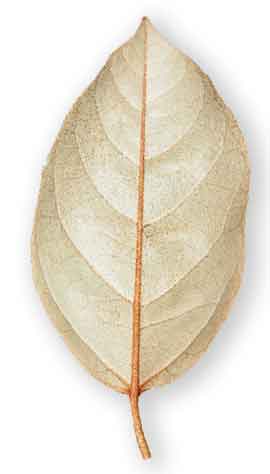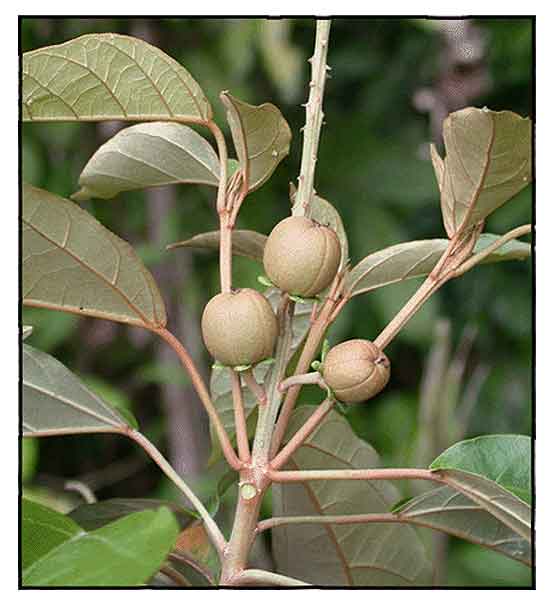
Family • Euphorbiaceae
Tubang-puti
Croton argyratus Blume
SILVER CROTON
| Scientific names | Common names |
| Croton argyratus Blume | Tubang puti (Tag.) |
| Croton argyratus var. brevipes Müll.Arg. | Silver croton (Engl.) |
| Croton argyratus var. genuinus Müll.Arg. | |
| Croton argyratus var. gracilis Müll.Arg. | |
| Croton argyratus var. hypoleucus Müll.Arg. | |
| Croton avellaneus Croizat | |
| Croton bicolor Roxb. | |
| Croton budopensis Gagnep. | |
| Croton maieuticus Gagnep. | |
| Croton pilargyros Croizat | |
| Croton tawaoensis Croizat | |
| Croton zollingeri Miq. | |
| Oxydectes argyrata (Blume) Kuntze | |
| Oxydectes bicolor (Roxb.) Kuntze | |
| Croton argyratus is an accepted species. KEW: Plants of the World Online | |
| Other vernacular names |
| BORNEO: Balek puteh, Balik angin, Banglut, Dungun darat, Katisan, Liat padang, Lohon, Lokon, Marinkangin. |
| BRUNEI: Kemarik. |
| INDONESIA: Parengpeng (Sundanese), Tapen kebo (Javanese), Leprak (Madurese). |
| MALAYSIA: Cheret budak, Chenderai, Semengkeh. |
| OTHERS: Hamba |
• C. argyratus is a tree that can reach up to measure about 20(-27) m tall. The leaves are ovate in shape, measuring about 8-26 cm x 6-11 cm and subcordate base with 2 small and auricled lobes. The apex is acuminate and entire margin. The lower surface is densely covered with bronze scale-like hairs. The petiole is measure about 2.5-18 cm long. The inflorescence is densely scaly. The outside sepal is densely scaly. Flowers are staminate. The petals are obovate in shape, 2.5-3 mm long, hairy, with 11 stamens where the filaments are with long hairs or hairless. The disk flowers are with stellate hairs while the ovary is densely scaly. The 6-grooved fruit is spherical in shape and it is measure 1.5-2 cm in diameter. (11) Distribution
Properties Studies Availability |
May 2025
![]()
 |
| Â Â Â Â Â Â Â Â Â Â Â Â Â Â Â Â Â Â Â Â Â Â Â Â Â PHOTOS / ILLUSTRATIONS |
| IMAGE SOURCE: Euphorbiaceae : Croton argyratus / Fruiting twig / Copyright © 2020 by Shiella Olimpos (contact: pieter.pelser@canterbury.ac.nz) [ref. DOL147849] / Non-Commercial Use / Click on image or link to go to source page / Phytoimages.siu.edu |
| OTHER IMAGE SOURCE: Euphorbiaceae : Croton argyratus / © Rachun Pooma - Flora of Thailand / Non-commercial use / Click on image or link to go to source page / National Herbarium NL |
| OTHER IMAGE SOURCE: Euphorbiaceae : Croton argyratus leaf / © 葉è£ã¯éŠ€è‰²ã€‚/ Non-commercial use / Image modified / Click on image or link to go to source page / Crassa.cocolog |
Additional
Sources and Suggested Readings |
• |
DOI: It is not uncommon for links on studies/sources to change. Copying and pasting the information on the search window or using the DOI (if available) will often redirect to the new link page. (Citing and Using a (DOI) Digital Object Identifier) |
| Â Â Â Â Â Â Â Â Â Â Â Â Â Â Â Â Â Â Â Â Â Â Â Â Â Â Â Â Â Â List of Understudied Philippine Medicinal Plants |
| Â Â Â Â Â Â Â Â Â Â Â Â Â Â Â Â Â Â Â Â Â New plant names needed The compilation now numbers over 1,500 medicinal plants. While I believe there are hundreds more that can be added to the collection, they are becoming more difficult to find. If you have a plant to suggest for inclusion, native or introduced, please email the info: scientific name (most helpful), local plant name (if known), any known folkloric medicinal use, and, if possible, a photo. Your help will be greatly appreciated. |
• |
 |



 Constituents
Constituents